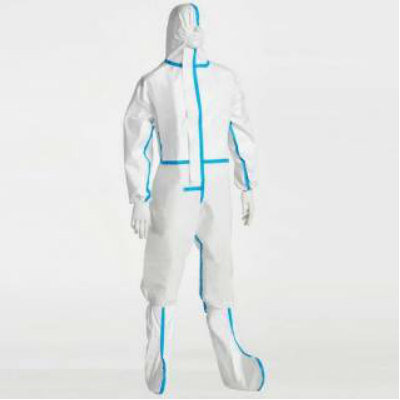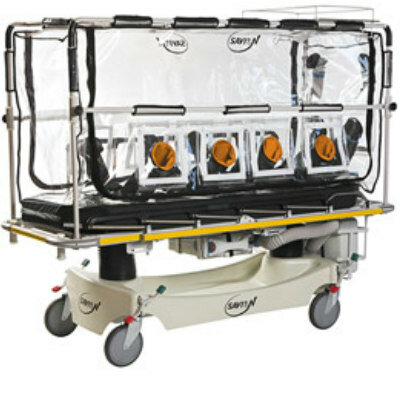First Biological Implants Used for Treatment of Cartilage Lesions and Osteoarthritis in Humans
|
By HospiMedica International staff writers Posted on 21 Nov 2023 |

Every year, millions of joint replacement surgeries take place, and even more patients seek alternatives to delay or avoid using prostheses. An exciting new procedure now offers a promising solution for treating localized knee cartilage lesions and degenerative osteoarthritis (OA) cases, traditionally managed with knee joint replacements that typically require replacement after 15-20 years.
At the University Hospital Basel (Basel, Switzerland), researchers are pioneering a method that uses chondrocytes, the fundamental cells for cartilage construction, to grow new cartilage. This development could offer a significant alternative for patients who need more than just pain management but are reluctant to opt for a prosthetic joint. The procedure, named Nasal Chondrocyte Tissue-Engineered Cartilage (N-TEC), leverages autologous (self-derived) cartilage cells to create new cartilage grafts. These are then surgically implanted to repair the damaged cartilage in patients' joints. The process involves taking a small cartilage sample from the patient’s nasal septum, cultivating and expanding these cells, and then using them to grow new nasal cartilage grafts up to 40 cm2 on a collagen membrane. Remarkably, this process takes only four weeks, and harvesting the cartilage does not harm the patient's nose.
A key aspect of this technique is the use of nasal cartilage, which consists of neural crest-derived cells known for their high regenerative capacity and adaptability to various environments. This makes nasal chondrocytes, particularly from older donors, ideal for engineering N-TEC cartilage patches with the structural and mechanical qualities of typical articular cartilage tissues. Beyond lab and animal trials, N-TEC has successfully moved into clinical application. The University of Basel’s team, leading a multi-center trial across Europe, has effectively treated over 100 patients with knee focal lesions since 2012. The N-TEC grafts, tailored to the specific size and shape of the cartilage defect, are implanted via open surgery, where they integrate with surrounding cartilage and subchondral bone.
Not limited to focal lesions, the technique has been applied to patients with advanced knee OA, traditionally slated for joint replacement surgery. Two patients treated with N-TEC, along with leg axis correction, have reported sustained positive outcomes and continue to engage in daily activities six years after the procedure, without needing artificial joint replacements. Building on this success, the University Hospital Basel team is now extending this approach to treat OA and cartilage defects in various joints. They are conducting clinical trials focused on Patella-Femoral OA in the knee and cartilage issues in the ankle and shoulder, with plans to start elbow joint trials in 2024.
“N-TEC has demonstrated overwhelming success in human clinical studies to date,” said Ivan Martin, PhD, Professor of Tissue Engineering at the Department of Biomedicine, University of Basel and University Hospital Basel. “Thanks to generous public funding and cooperation with other outstanding teams, we will now extend clinical trials to investigate N-TEC in more challenging conditions so that someday it can become a mainstream bed-side procedure for many patients suffering from joint pain induced by cartilage loss.”
Related Links:
University Hospital Basel
Latest Surgical Techniques News
- Hydrogel-Based Miniaturized Electric Generators to Power Biomedical Devices
- Custom 3D-Printed Orthopedic Implants Transform Joint Replacement Surgery
- Wearable Technology Monitors and Analyzes Surgeons' Posture during Long Surgical Procedures
- Cutting-Edge Imaging Platform Detects Residual Breast Cancer Missed During Lumpectomy Surgery
- Computational Models Predict Heart Valve Leakage in Children
- Breakthrough Device Enables Clear and Real-Time Visual Guidance for Effective Cardiovascular Interventions
- World’s First Microscopic Probe to Revolutionize Early Cancer Diagnosis
- World’s Smallest Implantable Brain Stimulator Demonstrated in Human Patient

- Robotically Assisted Lung Transplants Could Soon Become a Reality
- AI to Provide Heart Transplant Surgeons with New Decision-Making Data
- New Surgical Tool Empowers Precision and Confidence in Operating Room
- Future Muscle-Powered Surgical Robots Could Perform Minimally Invasive Procedures inside Body
- Non-Invasive Technique Combines Cardiac CT with AI-Powered Blood Flow for Heart Bypass Surgery
- First-Of-Its-Kind Device Repairs Leaky Tricuspid Heart Valve
- New Signaling Method Enables Precise Localization of Miniature Robots and Surgical Instruments inside Body
- Novel Catheter System Enables Safer, More Cost-Effective Transseptal Procedures
Channels
Artificial Intelligence
view channel
AI-Powered Algorithm to Revolutionize Detection of Atrial Fibrillation
Atrial fibrillation (AFib), a condition characterized by an irregular and often rapid heart rate, is linked to increased risks of stroke and heart failure. This is because the irregular heartbeat in AFib... Read more
AI Diagnostic Tool Accurately Detects Valvular Disorders Often Missed by Doctors
Doctors generally use stethoscopes to listen for the characteristic lub-dub sounds made by heart valves opening and closing. They also listen for less prominent sounds that indicate problems with these valves.... Read moreCritical Care
view channel
Deep-Learning Model Predicts Arrhythmia 30 Minutes before Onset
Atrial fibrillation, the most common type of cardiac arrhythmia worldwide, affected approximately 59 million people in 2019. Characterized by an irregular and often rapid heart rate, atrial fibrillation... Read more
Breakthrough Technology Combines Detection and Treatment of Nerve-Related Disorders in Single Procedure
The peripheral nervous system (PNS) serves as the communication network that links the brain and spinal cord to every other part of the body. It consists of two parts: the somatic nervous system, which... Read morePatient Care
view channel
Surgical Capacity Optimization Solution Helps Hospitals Boost OR Utilization
An innovative solution has the capability to transform surgical capacity utilization by targeting the root cause of surgical block time inefficiencies. Fujitsu Limited’s (Tokyo, Japan) Surgical Capacity... Read more
Game-Changing Innovation in Surgical Instrument Sterilization Significantly Improves OR Throughput
A groundbreaking innovation enables hospitals to significantly improve instrument processing time and throughput in operating rooms (ORs) and sterile processing departments. Turbett Surgical, Inc.... Read more
Next Gen ICU Bed to Help Address Complex Critical Care Needs
As the critical care environment becomes increasingly demanding and complex due to evolving hospital needs, there is a pressing requirement for innovations that can facilitate patient recovery.... Read moreGroundbreaking AI-Powered UV-C Disinfection Technology Redefines Infection Control Landscape
Healthcare-associated infection (HCAI) is a widespread complication in healthcare management, posing a significant health risk due to its potential to increase patient morbidity and mortality, prolong... Read moreHealth IT
view channel
Machine Learning Model Improves Mortality Risk Prediction for Cardiac Surgery Patients
Machine learning algorithms have been deployed to create predictive models in various medical fields, with some demonstrating improved outcomes compared to their standard-of-care counterparts.... Read more
Strategic Collaboration to Develop and Integrate Generative AI into Healthcare
Top industry experts have underscored the immediate requirement for healthcare systems and hospitals to respond to severe cost and margin pressures. Close to half of U.S. hospitals ended 2022 in the red... Read more
AI-Enabled Operating Rooms Solution Helps Hospitals Maximize Utilization and Unlock Capacity
For healthcare organizations, optimizing operating room (OR) utilization during prime time hours is a complex challenge. Surgeons and clinics face difficulties in finding available slots for booking cases,... Read more
AI Predicts Pancreatic Cancer Three Years before Diagnosis from Patients’ Medical Records
Screening for common cancers like breast, cervix, and prostate cancer relies on relatively simple and highly effective techniques, such as mammograms, Pap smears, and blood tests. These methods have revolutionized... Read morePoint of Care
view channel
Critical Bleeding Management System to Help Hospitals Further Standardize Viscoelastic Testing
Surgical procedures are often accompanied by significant blood loss and the subsequent high likelihood of the need for allogeneic blood transfusions. These transfusions, while critical, are linked to various... Read more
Point of Care HIV Test Enables Early Infection Diagnosis for Infants
Early diagnosis and initiation of treatment are crucial for the survival of infants infected with HIV (human immunodeficiency virus). Without treatment, approximately 50% of infants who acquire HIV during... Read more
Whole Blood Rapid Test Aids Assessment of Concussion at Patient's Bedside
In the United States annually, approximately five million individuals seek emergency department care for traumatic brain injuries (TBIs), yet over half of those suspecting a concussion may never get it checked.... Read more
New Generation Glucose Hospital Meter System Ensures Accurate, Interference-Free and Safe Use
A new generation glucose hospital meter system now comes with several features that make hospital glucose testing easier and more secure while continuing to offer accuracy, freedom from interference, and... Read moreBusiness
view channel
Johnson & Johnson Acquires Cardiovascular Medical Device Company Shockwave Medical
Johnson & Johnson (New Brunswick, N.J., USA) and Shockwave Medical (Santa Clara, CA, USA) have entered into a definitive agreement under which Johnson & Johnson will acquire all of Shockwave’s... Read more
















